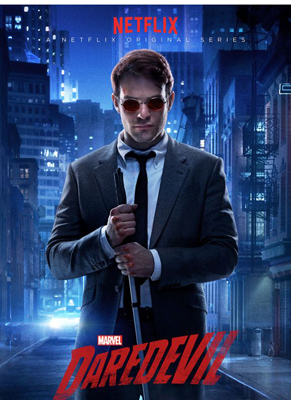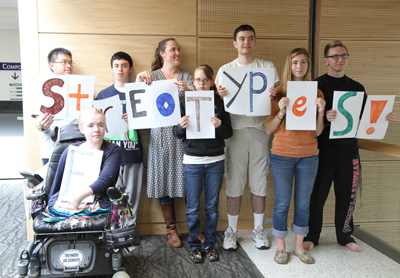Disability in the Media: Daredevil and Accessibility Issues

Last month, I eagerly consumed the entire season of Netflix’s original series, Daredevil. I have always loved superheroes, and Daredevil, who is blind, captured my attention long ago.
The main character, Matt Murdock (Daredevil), became blind after an incident involving a chemical spill when he was a child. The accident gave him superhuman senses and the ability to navigate the world in a different way. Matt is a lawyer by day and a vigilante by night, using his powers to protect the crime ridden neighborhood of Hell’s Kitchen. His story is lovely and complex, as he works inside and outside the law to bring justice to the world. I was happy with how well the television series was written.
As it turns out, a lot of people agree with me. However, one group of people wasn’t given the chance to watch and form an opinion. Daredevil did not provide audio descriptions, leaving people with visual disabilities unable to watch the show. This would be comical if it wasn’t tragic; since the show features a blind character, Netflix should have put some thought into making it accessible.
According to the American Council of the Blind, audio descriptions make television, movies, and other art forms accessible to people who are blind, have low vision, or are otherwise visually impaired: “It is a narration service that attempts to describe what the sighted person takes for granted—those images that a person who is blind or visually impaired formerly could only experience through the whispered asides from a sighted companion.”
As far as movies go, studios have been increasing the amount of movies that include audio description in home release, and more theaters have gained the correct equipment for using audio descriptions. Of last year’s Oscar nominees for best feature, seven of the films were audio described. In an interview with Kim Charlson, the President of the American Council of the Blind, she appreciated the audio descriptions in The Theory of Everything, a movie based on Steven Hawking’s story. “As the character has his disability progress, he speaks less, there’s more things happening visually, and the description was so important to really understanding the struggles he was going through,” she said.
But what about television? The FCC has regulations for broadcast television, which include requiring a certain number of hours of audio described television. However, Netflix is not a broadcasting company; they do not have those requirements. Many blind activists began rallying online to raise awareness of the fact that Netflix doesn’t have audio descriptions. Some are even advocating for more online material to be required to be audio described. A lot of advocates promote the idea that where the Internet is considered a public space or a place of business, like Netflix’s streaming service, the Americans with Disabilities Act should apply.
Netflix quickly responded to this issue and added audio descriptions to Daredevil within a week. Netflix also said that it intends to make other original series, including Unbreakable Kimmy Schmidt, House of Cards, Orange Is the New Black, and Marco Polo accessible in the future.

While it is great that Netflix responded to this particular case, we still have to look at this from the wider perspective. The fact is that people with visual impairments do not have the same access to media as most due to this lack of accessibility. It is great having a mainstream superhero with an apparant disability, but when people with disabilities can’t access his story, it isn’t super at all.
For more information on audio descriptions or the issues described in this article, visit the Audio Description Project (adp.acb.org/movies.html), read about the Oscars and audio description (wgbhnews.org/post/how-those-whove-lost-vision-watch-films), or listen to NPR discuss Daredevil (http://www.npr.org/sections/monkeysee/2015/04/17/400157297/pop-culture-happy-hour-daredevil-and-credulity).